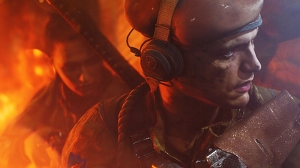
Video games have given us countless images of the past, some literal-minded, some more playful, from Total War’s continent-sized thought experiments to the hinterland between myth, game design and archaeological record that is Assassin’s Creed Odyssey. Among 2018’s offerings are two that, to my mind, deserve special attention for the stark yet deceptive contrast they form: DigixArt and Aardman’s melancholy Great War tale 11-11: Memories Retold, and DICE’s characteristically seismic World War 2 shooter Battlefield 5.
In many respects, the two could not be more unlike. One is a multiplayer-centric ensemble piece in which huge armies clash on a Greatest Hits of regional combat theatres, the other a gentle, affecting third-person outing in which you need never fire a single bullet. Each game, moreover, has its own very specific way of looking at the past. One is a photorealistic simulation, devoted to visual granularity both for its own sake and to facilitate encounters in which cover and camouflage are key; the other, a playable homage to fine art and in particular, the late 19th century movement Impressionism, which “paints” each frame’s contents in real-time, brushstroke by brushstroke.
Consider how their approaches differ when it comes to objects near and far. In Battlefield 5, everything is knife-sharp no matter the distance, as you zero-in on bodies crawling along a hillside only for an opposing soldier to burst, horribly gigantic, from the undergrowth to your left. Visibility varies according to the weather and combat conditions, but the ethos remains one of baleful clarity: the grenade smoke might block your aim but it is always high fidelity. 11:11 has no truck with such all-or-nothing detailing – indeed, it seems positively hostile to it, at any range. Lanterns, branches and barbed wire shudder apart close at hand into writhing columns of brushmarks, like dirty raindrops on glass, while landmarks are swept away and etherised in heaves of autumnal colour.
Source: Eurogamer What should a World War look like?

